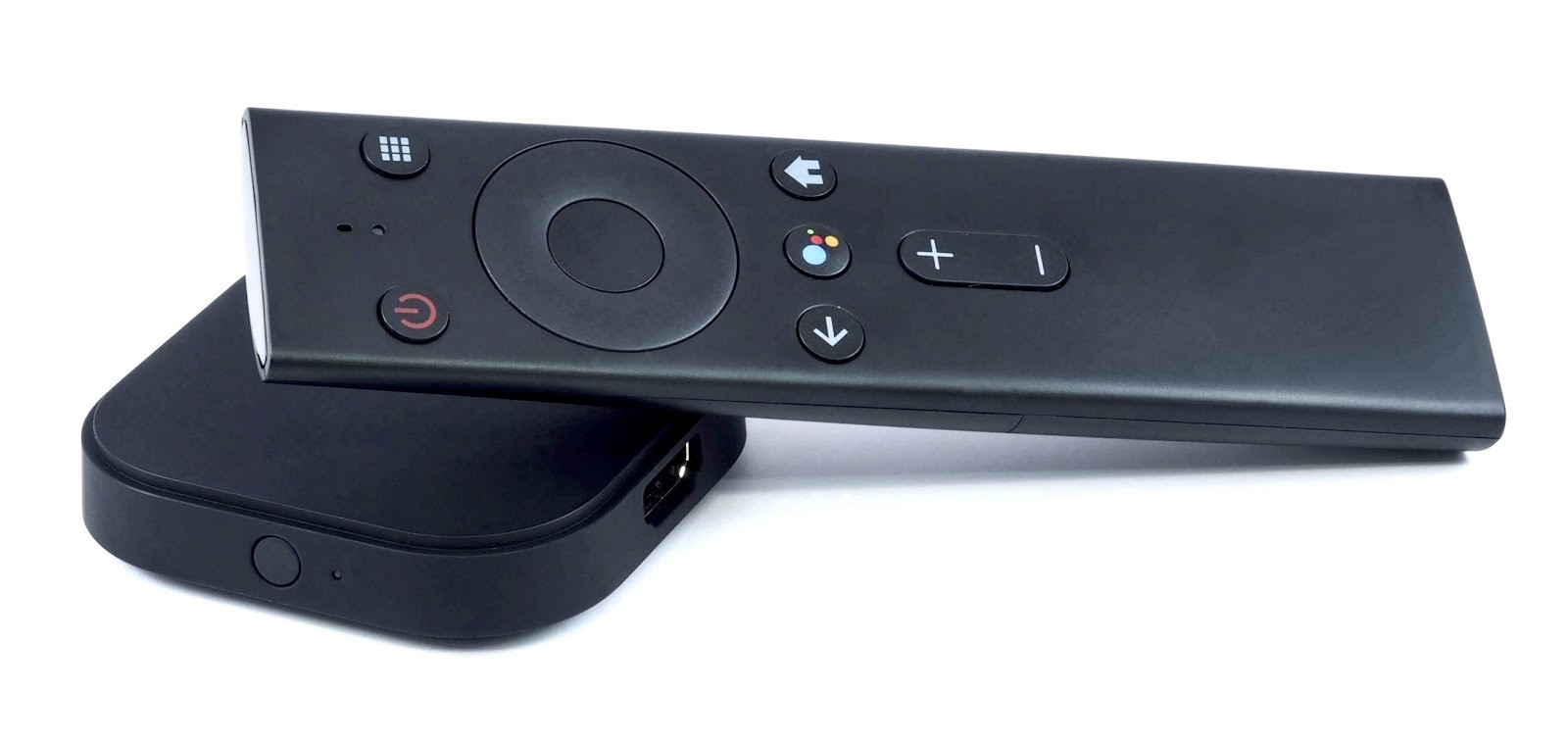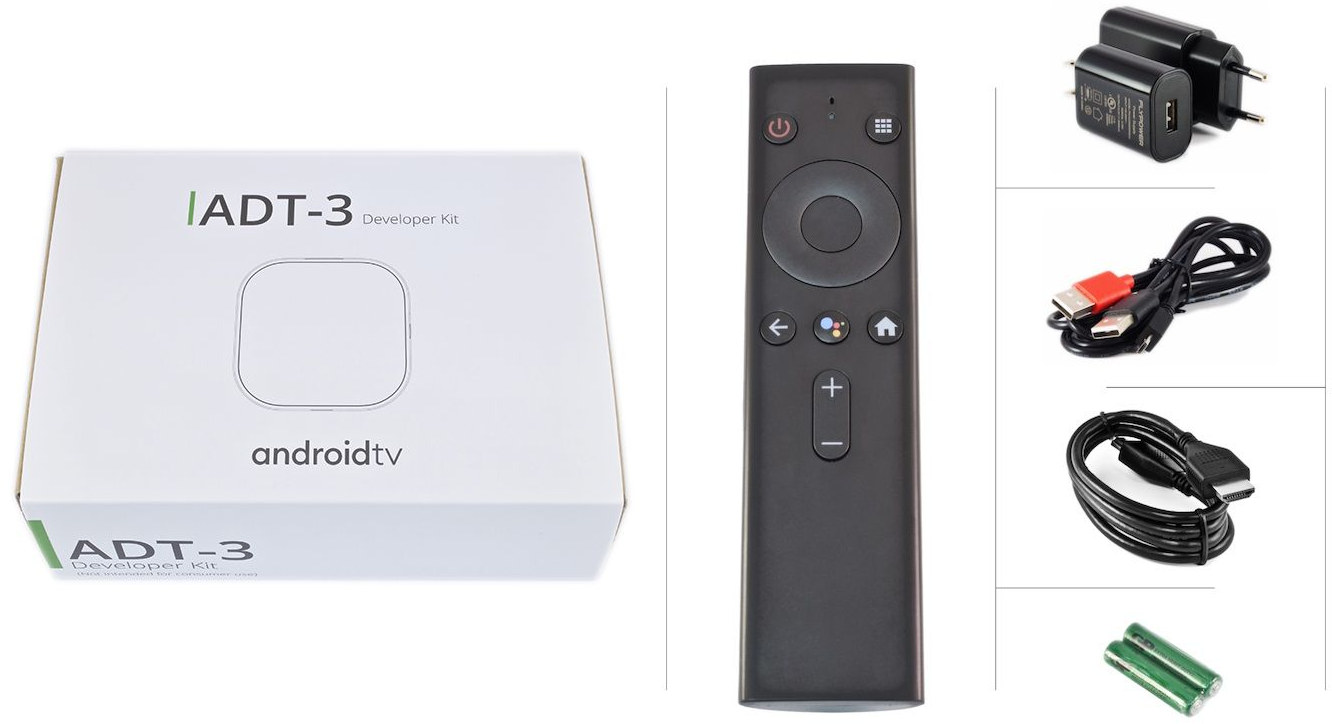Google released Android TV on Android 10 last month while announcing the Google ADT-3 developer kit to help developers make sure their TV apps are ready for the latest version of the operating system.
The developer kit, that’s basically a TV box, was not available at the time, and we had limited information, but Google ADT-3 can now be purchased for $79 on Askey, an ASUS Computers subsidiary.

We also know the full specifications for Google ADT-3:
- SoC – Amlogic S905Y2 quad-core Arm Cortex-A53 processor @ 1.8 GHz with an Arm Mali-G31 MP2 GPU
- System Memory – 2GB RAM
- Storage – 8GB eMMC flash
- Video Output – HDMI 2.1 port up to 4K Ultra HD resolution @ 60 Hz
- Connectivity – 802.11ac (2.4GHz / 5GHz) 2T2R WiFi 5 and Bluetooth 4.2 classic+LE
- USB – 1x Micro USB port
- Misc – Bluetooth Pairing / Recovery Button, red/green status indicator
- Power Supply – 5V/1A via micro USB port
- Dimensions – 69 x 69 x 15 mm (W x D x H)
- Weight – 50 g

The developer kit also comes with a Bluetooth remote control with voice assistant support, two AAA batteries, a 5V/1A power adapter, a USB Y-cable for power and debugging, and an HDMI cable.
As explained on the website, it’s not a consumer device, nor a reference design:
ADT-3 Developer Kit is an Android TV streaming media player device for software developers to validate their applications on the latest version of the OS. The device runs Android 10 and is certified to pass CTS, GTS, and VTS. It is not a hardware reference design, but represents a stable, certified example of an Android TV device for 3rd party application developers. The device is not intended for consumer use and should only be used by developers.
To be honest, I’m not quite sure why it’s not intended for consumer use, maybe just a warranty issue, or it lacks features like Netflix certification?
Google ADT-3 developer kit will also only sell to a limited number of country namely Australia, Austria, Belgium, Canada, Czech, Denmark, Finland, France, Germany, Hong Kong, Hungary, India, Italy, Japan, Netherlands, New Zealand, Norway, Poland, Portugal, Romania, Singapore, South Korea, Spain, Switzerland, United Kingdom, and the United States with the latter having its own purchase page.
Via XDA Developer. Thanks to Pedro for the tip.

Jean-Luc started CNX Software in 2010 as a part-time endeavor, before quitting his job as a software engineering manager, and starting to write daily news, and reviews full time later in 2011.
Support CNX Software! Donate via cryptocurrencies, become a Patron on Patreon, or purchase goods on Amazon or Aliexpress




